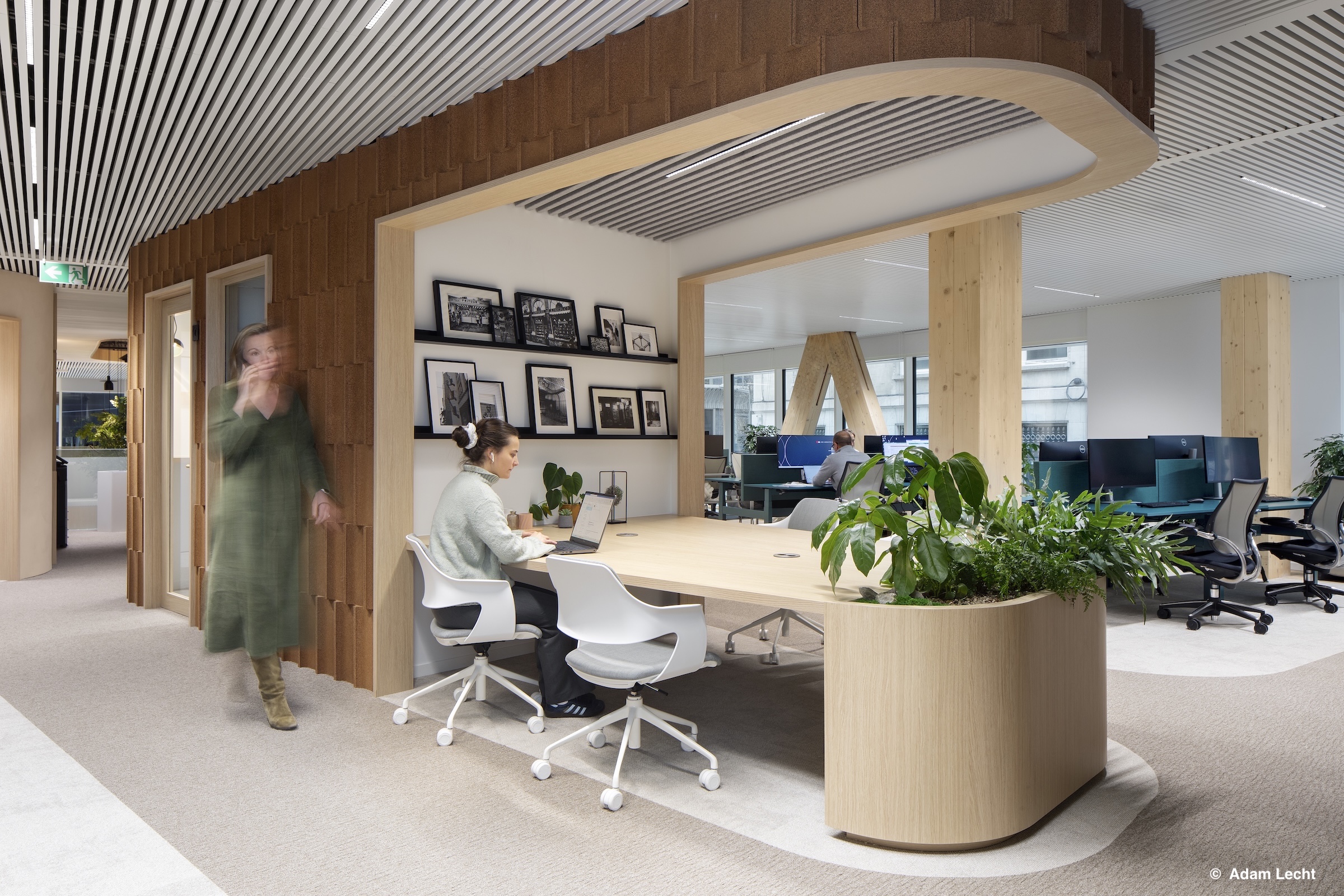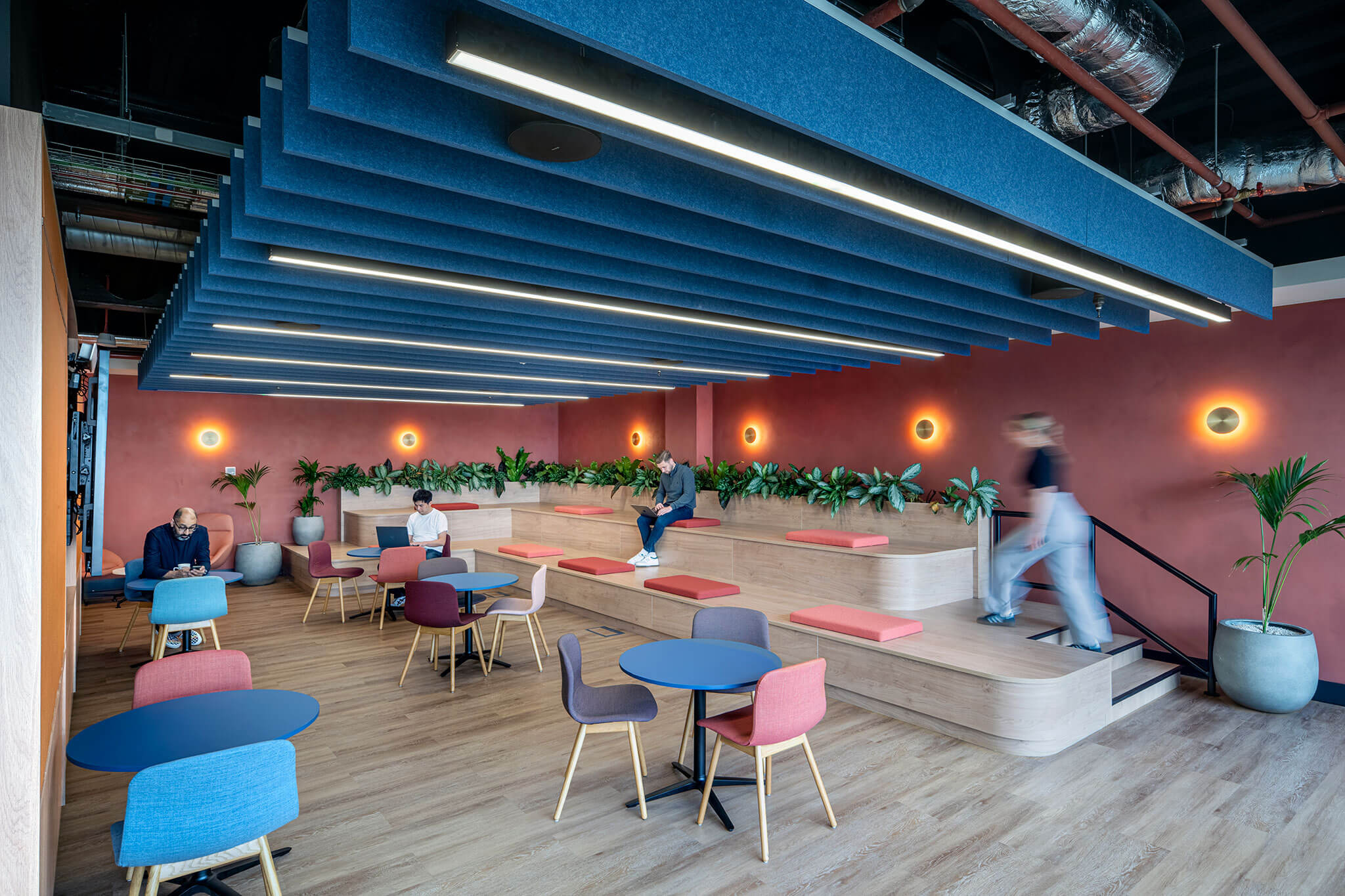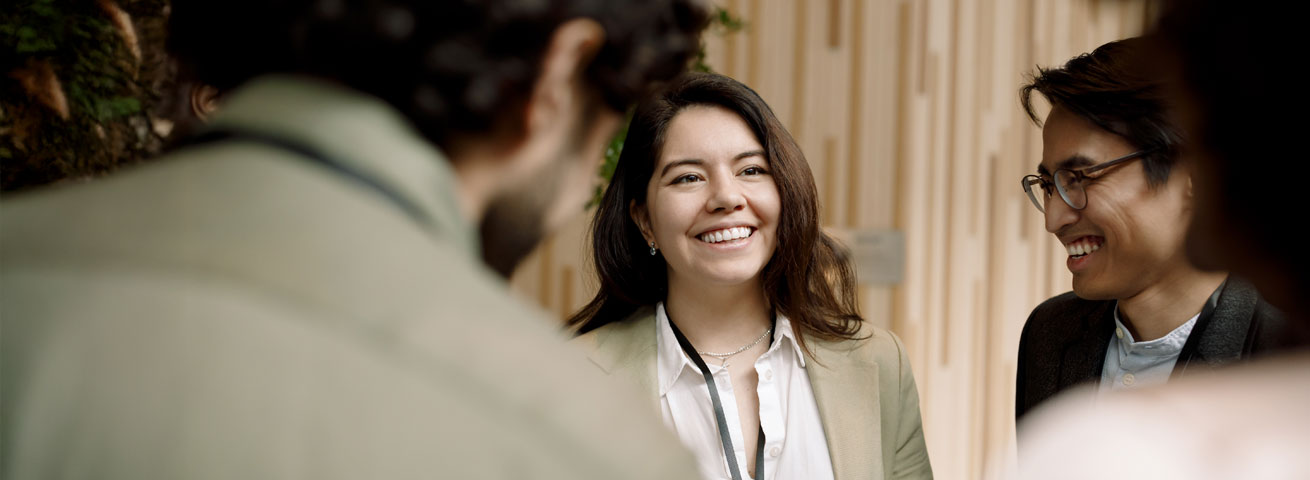Our experts share their insights on how workplace design will evolve to accommodate new ways of working.
After a year that has seen a monumental change in how people work, many design trends that were emerging among progressive offices are set to become part of the norm.
Flexible workspaces, a design priority on employee wellbeing, and office furniture with a residential aesthetic are among the solutions predicted to inspire employees to engage with the office space as working from home becomes increasingly prevalent.
Future workplace design is likely to allocate less space to individual workstations in favour of workspace for collaboration, idea sharing and learning, with 44% of office users reporting that what they miss most about the office is interacting and socialising with colleagues (JLL Human Performance Survey, May 2020).
Such employee-centric workspaces will become a key marker for business success, as more corporations than ever seek to optimise staff performance by enhancing the employee experience and offering flexibility in where and how to work.
Home office furniture design will also evolve to meet new demand for focus space in the home, with 75% of employees expecting employers to support working from home and one in three requesting a dedicated allowance for home office expenses (JLL Human Experience Survey 2020, October 2020).
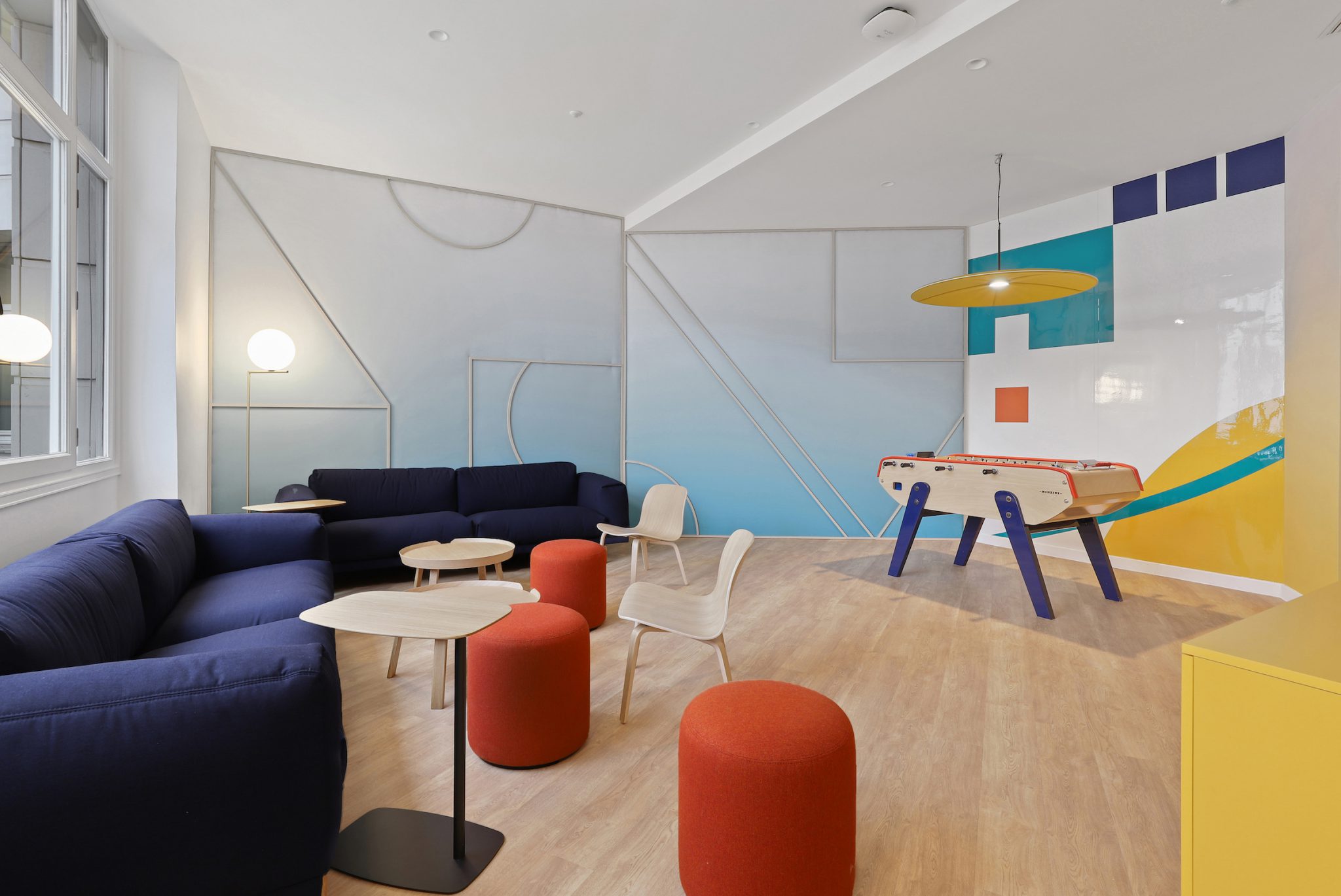
At the same time, the demand for greater sustainability in the corporate environment will continue to manifest in office design. Whether employees are working in offices, at home or in other spaces, creating a work environment that is healthy for people and the planet will be a key ambition for workplace design.
01. Office social club
This year’s record shift towards home-working has accelerated the role of the office as a hub for collaboration and socialising rather than individual focused work – which employees have proven can be effectively done away from the office.
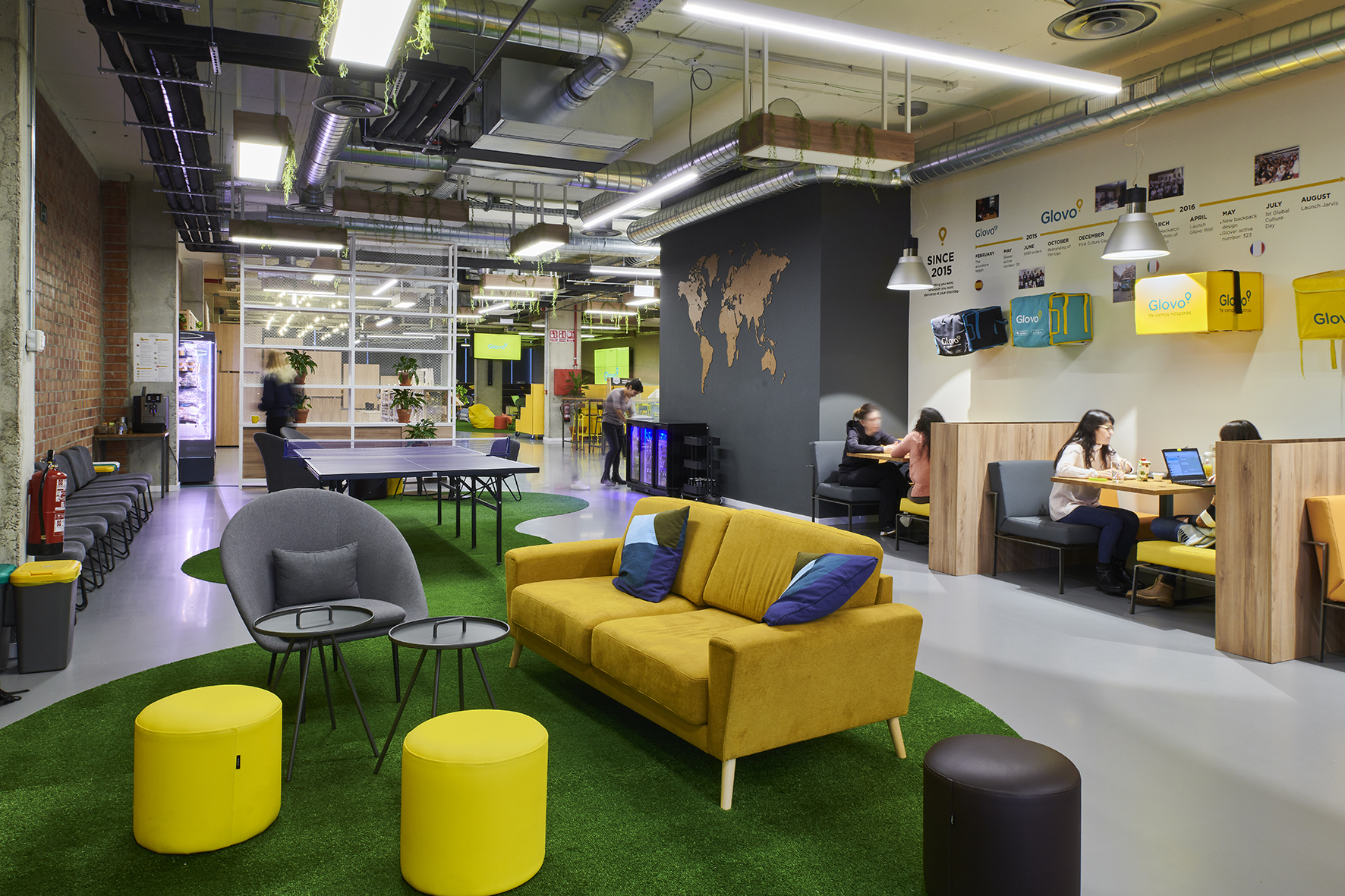
Instead of focusing on a desk-per-employee ratio, office design will be based on communal spaces with a vast array of furniture choices to facilitate what the home does not: formal and informal group work, mentoring, and opportunities for water cooler chats with colleagues to spark ideas. There will be more emphasis on facilities for the specific tasks where employees require the office space over the home, such as well-equipped meeting rooms and workspaces that foster interaction. Workplace design that promotes a company’s brand identity will be an important way to cultivate a sense of belonging among employees who are coming in less frequently.
Face-to-face client meetings will continue to take place in the office, cementing the function of the office as a showcase for a company’s core values and company culture.
02. House comforts
Amid an ongoing pandemic, not all staff will feel comfortable returning to the office – particularly when they can be productive at home – so workplaces will need to offer a similar level of comfort and security to working from home.
This will drive a shift towards office design that blurs the distinction between home comforts and office necessities, while providing reassurance of safety in interacting with colleagues. This can include lounge-style seating that enables socially distanced meetings, the use of greenery as aesthetically pleasing buffers that also help create a calming ambiance, and equipped kitchen or break areas that replicate the ease of the home setting. Touch-free fixtures – such as automatic faucets – and the use of easy-to-clean materials will emerge as the norm to ensure employees feel safe in communal spaces.
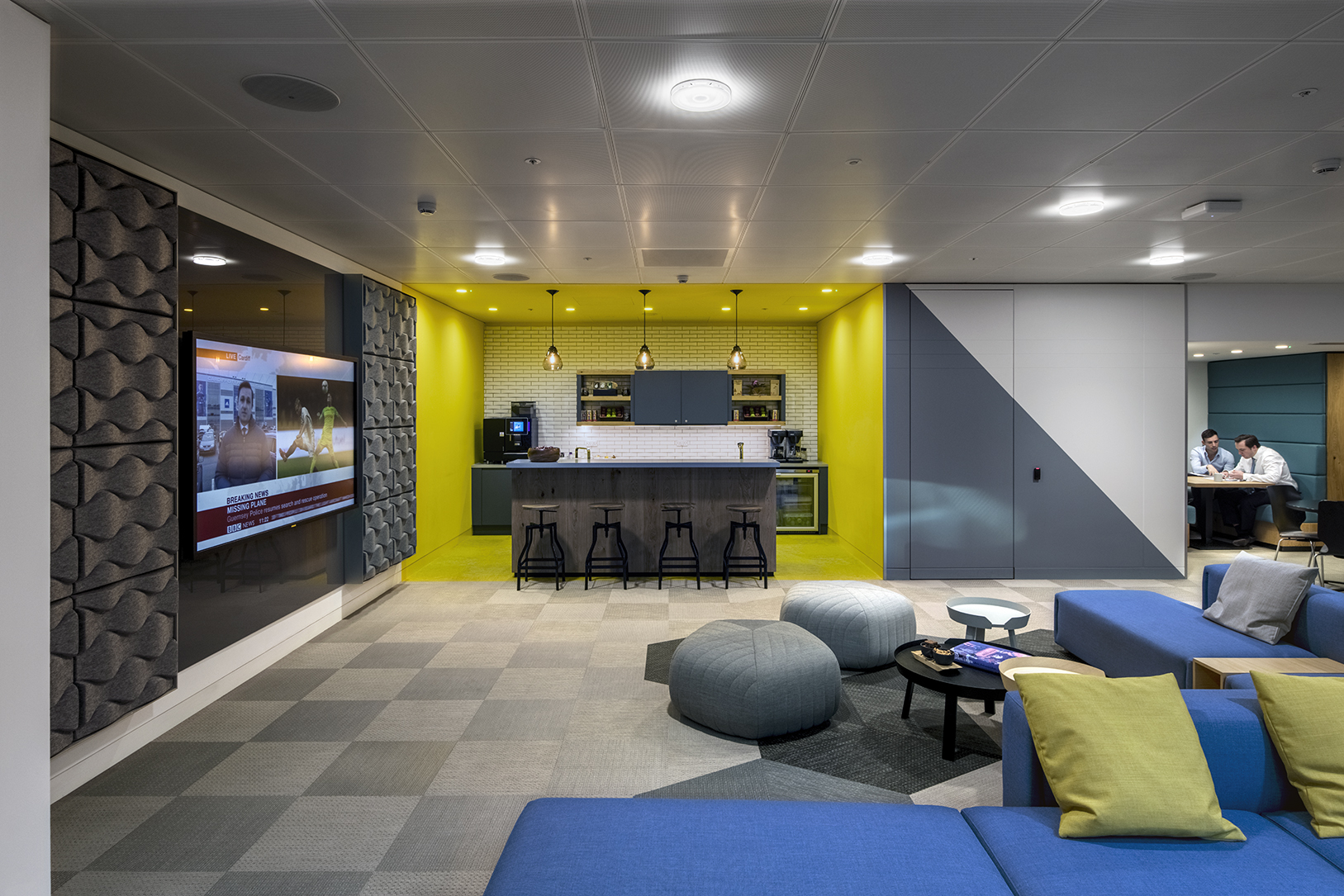
03. Smaller and flexible
With lower numbers of staff in the office, many companies will choose to change their real estate models, reducing their footprint and potentially adopting a hub and club model. Smaller headquarters will be more dynamic, flexible spaces that can be reconfigured quickly to welcome different types of events and work activities, while secondary locations offer more choice for employees.
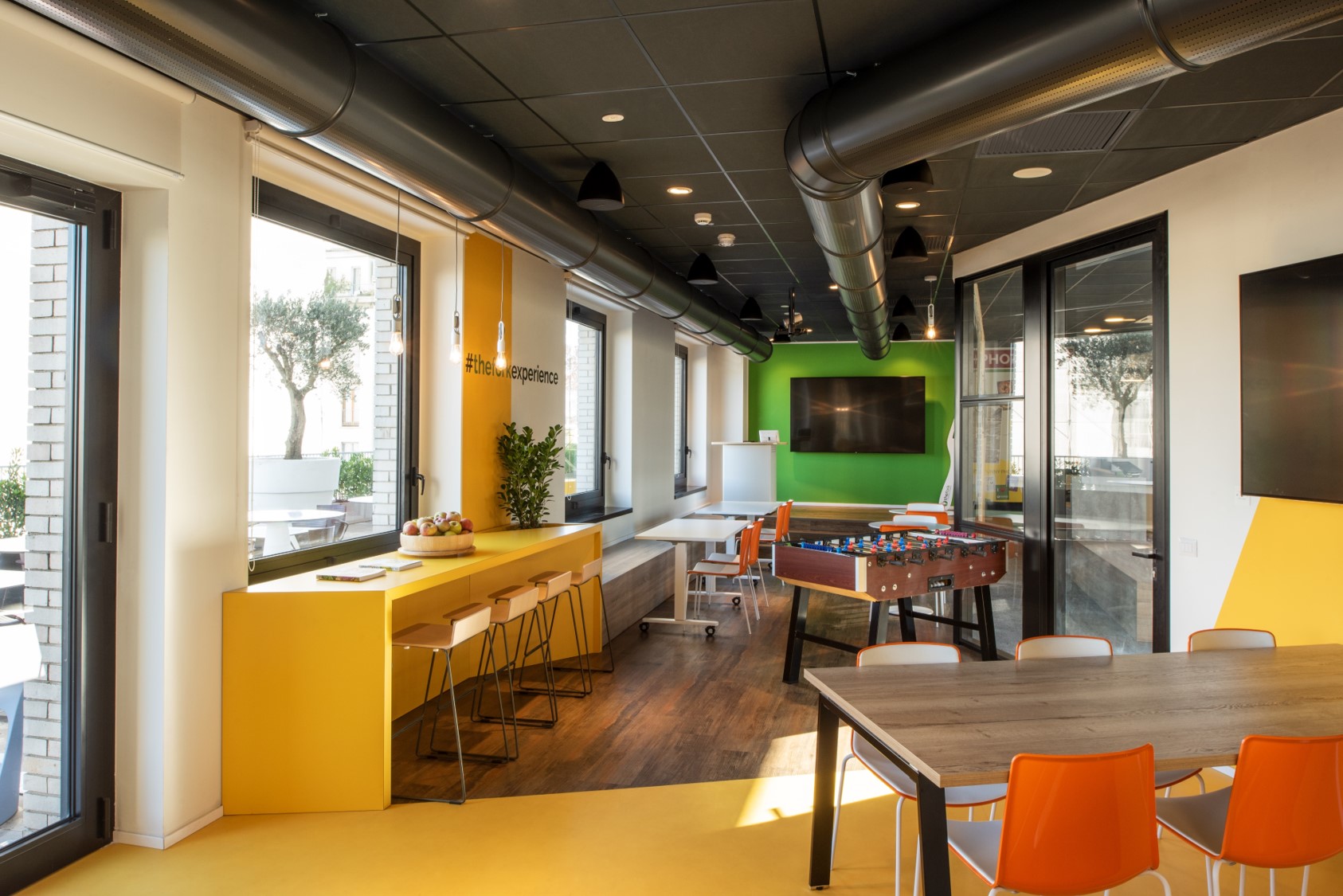
Modular furniture will become more popular as a solution to easily change meeting areas to accommodate smaller or larger groups. With less focus work done at the office, the need for individual workstations will fall, replaced by varied work areas to facilitate different tasks, such as sofa seating for informal group work, work-friendly cafés and partitioned niches for one-to-one sessions. Furniture will be chosen to support desk sharing, including cabinets for shared documents and lockers to store personal items, and there will be significant emphasis on mobility, with integrated high-definition displays and electrical sockets to enable employees to connect their devices, share screens and work anywhere.
04. Advanced meeting rooms
With business travel less feasible, video conferencing meetings will become prevalent, driving the development of office meeting spaces. As well as ultra-high-speed internet, interior design will incorporate call booths to ensure acoustic privacy for client conferences, while designated large group space will feature large screens and well-placed webcams so remote colleagues can comfortably join team meetings. These spaces could also be used for virtual training sessions. Smart room booking systems and occupancy sensors will be common solutions to ensure efficient use of meeting space.
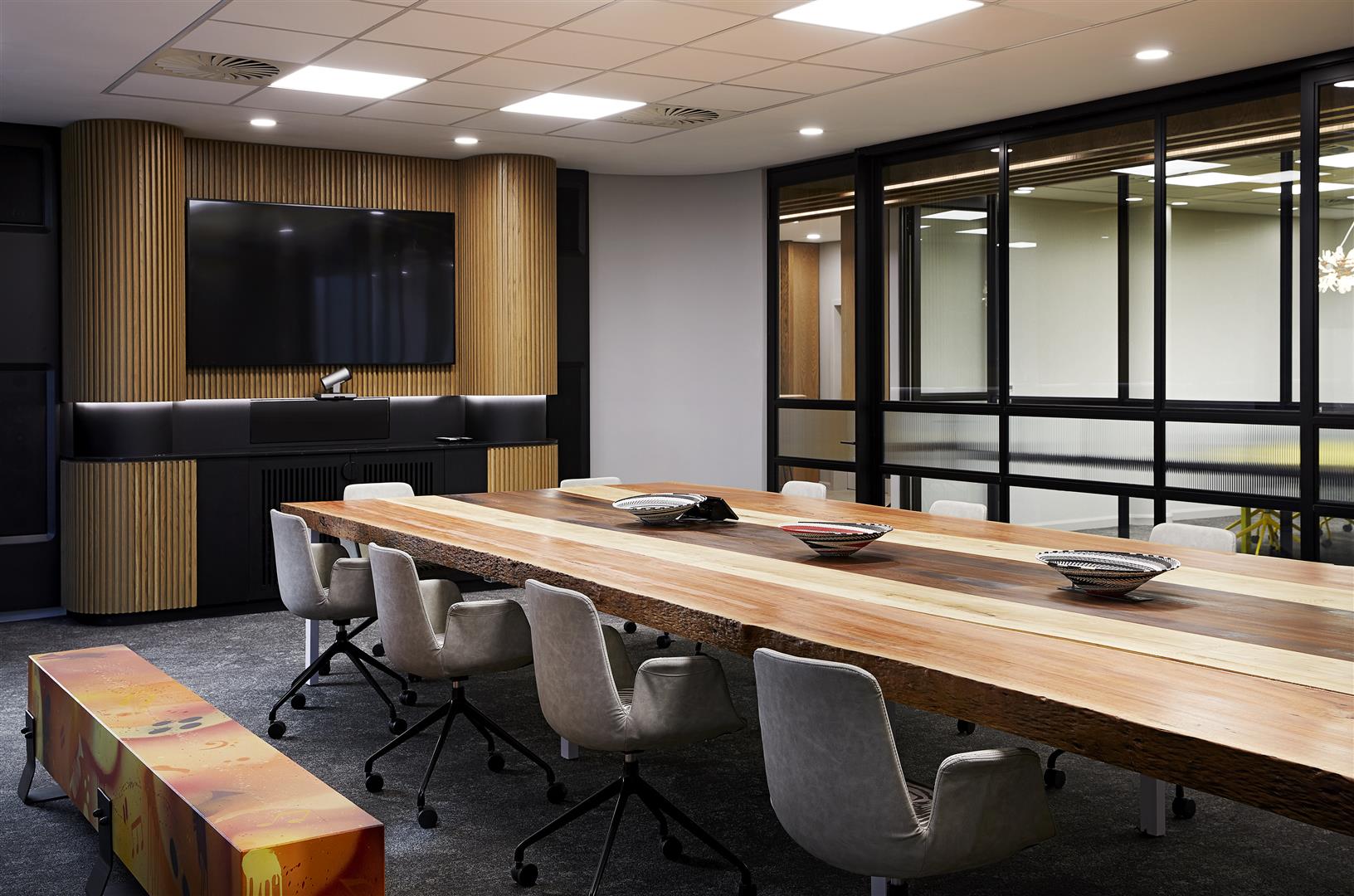
05. Home office promotion
As more people work from home than ever before, new styles of office furniture adapted to the home setting will emerge. For office setups in smaller homes, compact multi-purpose furniture with a residential aesthetic will offer a solution that blends into household décor and does double-duty as storage or an extra surface, such as a dining table with a slide-out desk.
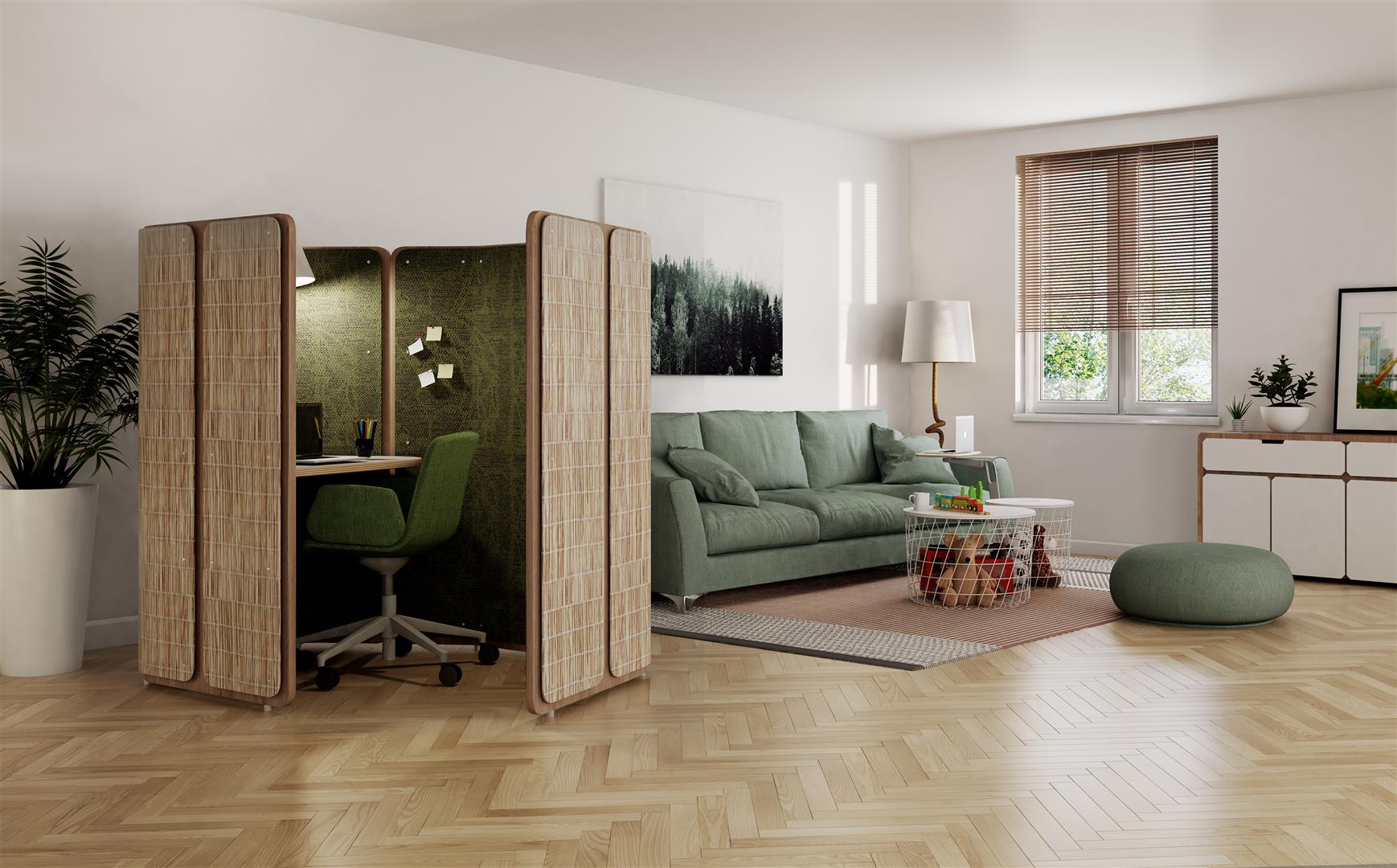
Alternately, distinctively designed desks and chairs that stand out can demarcate the work zone within a living area, with ample storage to hide work paraphernalia after-hours. The biggest challenge will be to create a cocoon that insulates people from the noise and distractions of the home, and enables the deep dive into daily work. This may be solved by partitions or shelving to acoustically and visually section off a work space, as well as lighting designed for focus and attention within a given area.
06. Acoustic revolution
With excess noise in open-plan offices already a common pain point, the rise in working from home is catalysing a new focus on acoustic environments at work – whether at home or in an office. Furniture may be treated acoustically or built with sound-absorbent materials, or rooms in the home soundproofed along walls and ceilings. Office design will incorporate sound-insulating materials in raised flooring, ceiling tiles and within partitions to reduce sound travelling throughout the workplace. Some homes or workplaces may make use of ventilated pods outfitted with seating and desk space to fully minimise sound distractions.
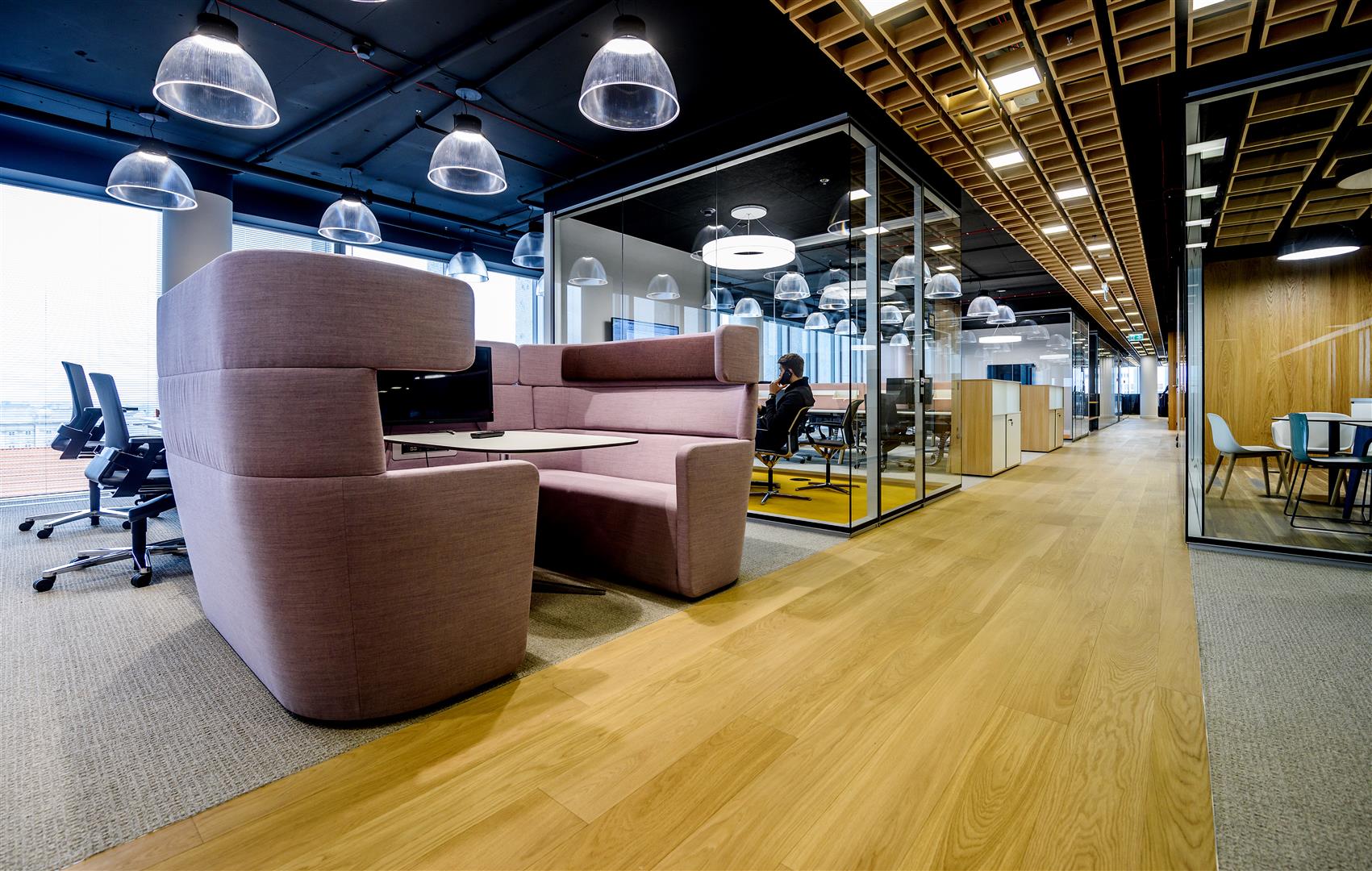
07. Sustainable scenic spaces
As national sustainability targets loom, more companies are striving not only for net zero carbon emissions, but to achieve net-positive workplaces that create a positive impact on the environment and on employee wellbeing. Energy efficiency will become more important, with interior design leveraging daylight to reduce reliance on artificial lighting, while more offices will be designed with sustainable materials from local suppliers.
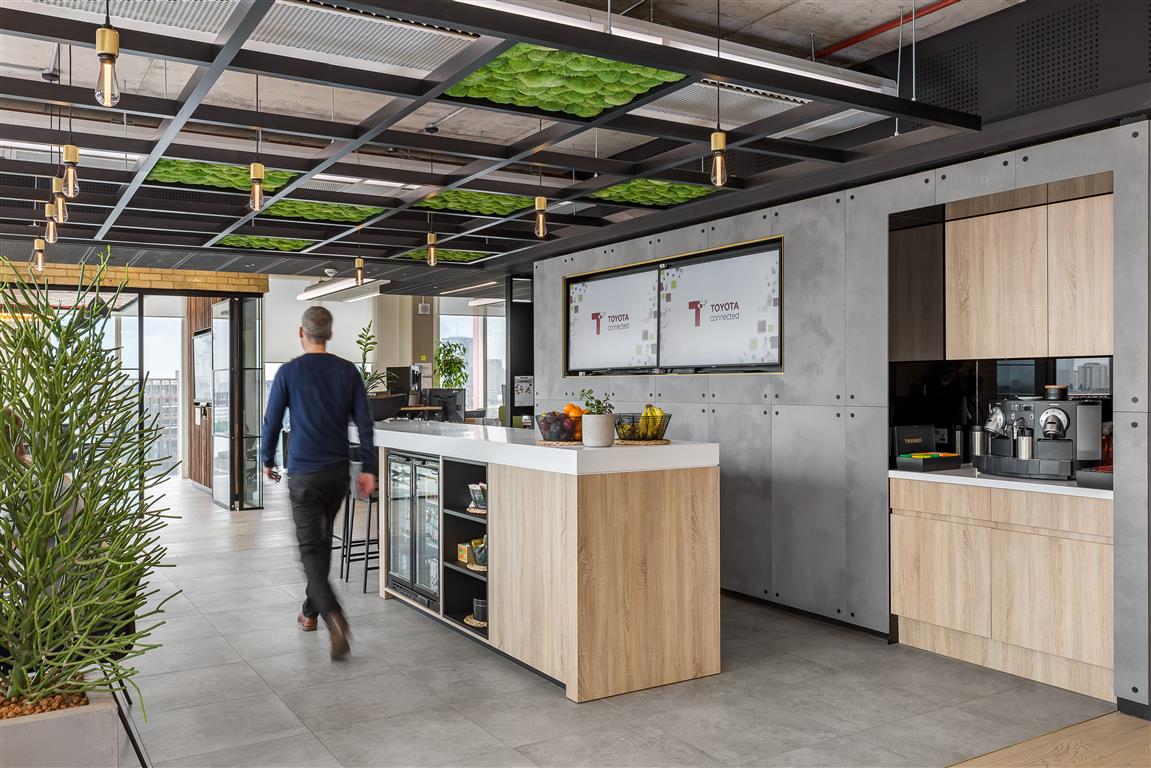
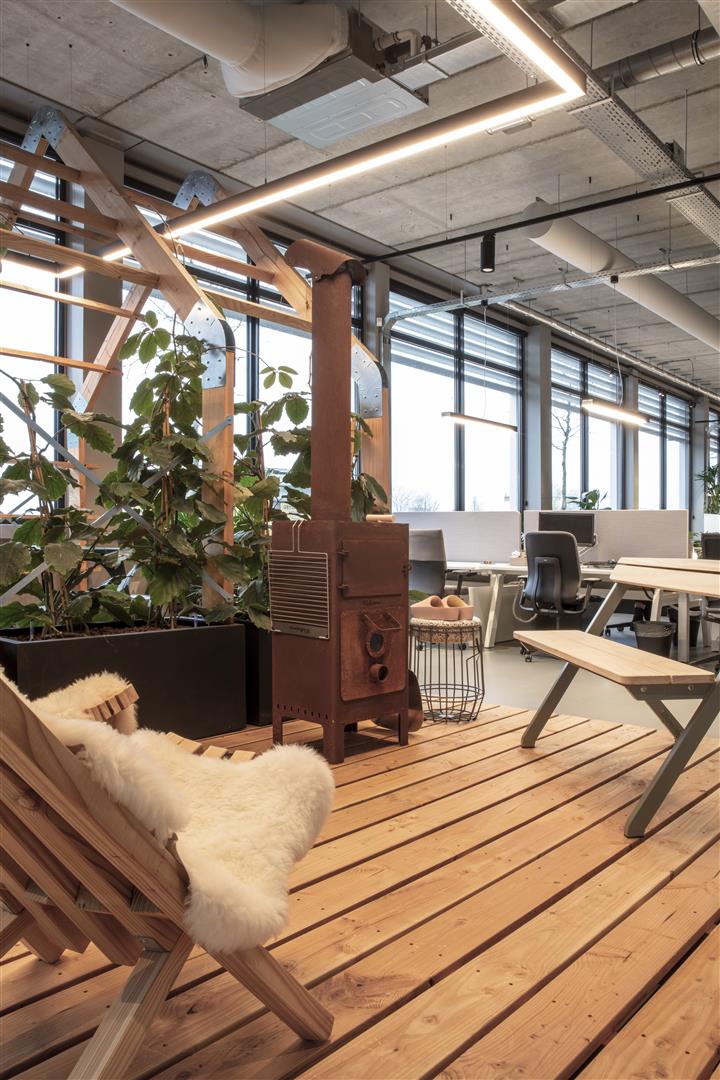
At the same time, more people are seeking a connection to nature, and the ability to live and work in line with their values.
These factors are contributing to a boom in biophilic design that holistically integrates greenery and natural, sustainable materials to foster clean air, acoustic comfort and an abundance of natural light – and ultimately, to recreate the outdoor environment indoors. This design philosophy will become increasingly prevalent as more companies seek to create pleasant, healthy work surroundings that meet growing needs and wants for offices that don’t feel like spaces merely for work, but which enhance wellness and quality of life.
The sharp rise in remote working will significantly impact office design, while expanding the definition of a workplace and where productive work can be done. People will expect much more from their office than simply a place to sit and work, and design is evolving to reflect the importance of the office as a space for social interaction, idea generation and cultivating a community. As an increasingly vital showcase of company culture and brand identity, a workplace that offers a healthy, sustainable, communal environment will become an even more important differentiator for retaining staff and attracting talent.

Find out how Tétris can help you re-imagine your workplace in 2021
